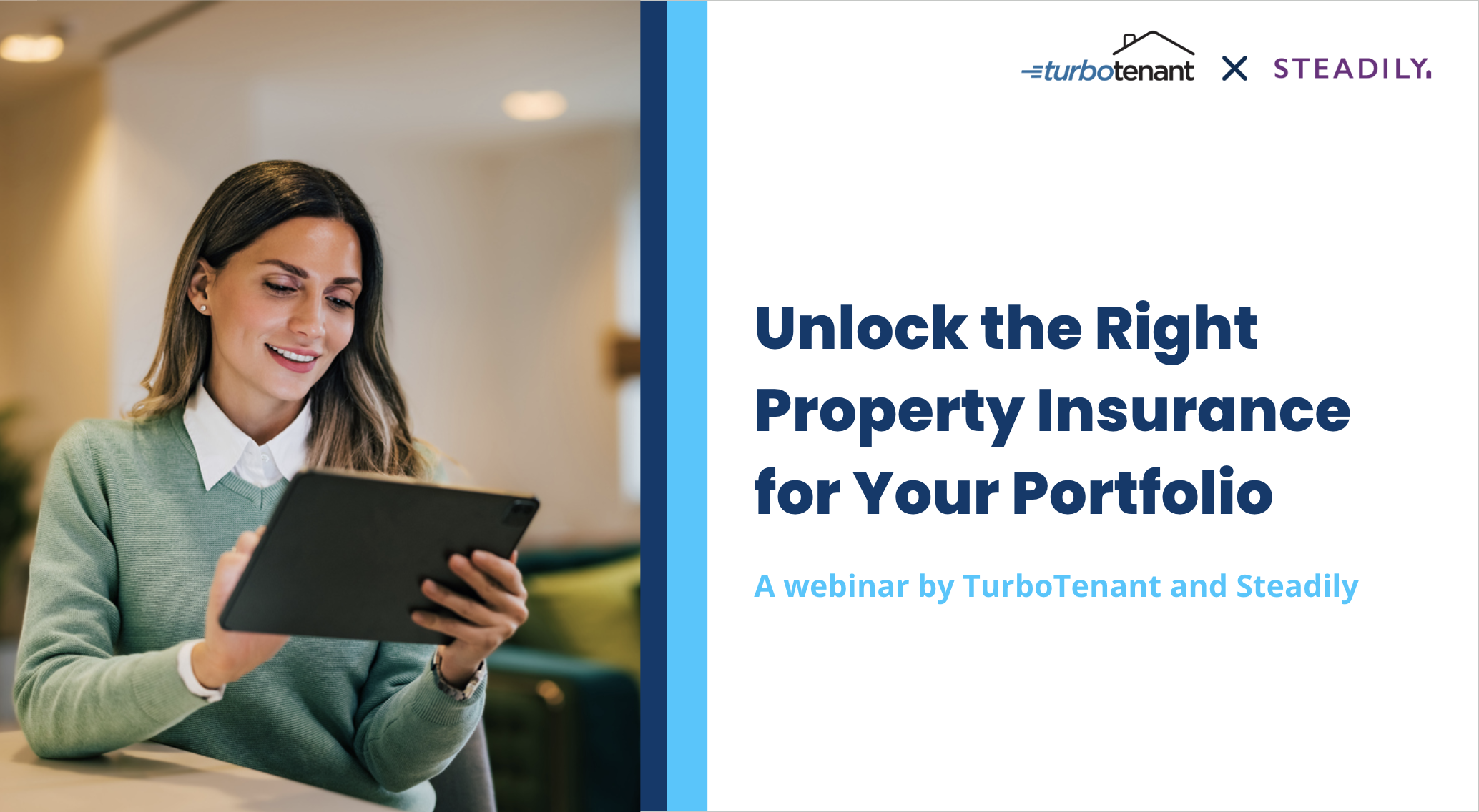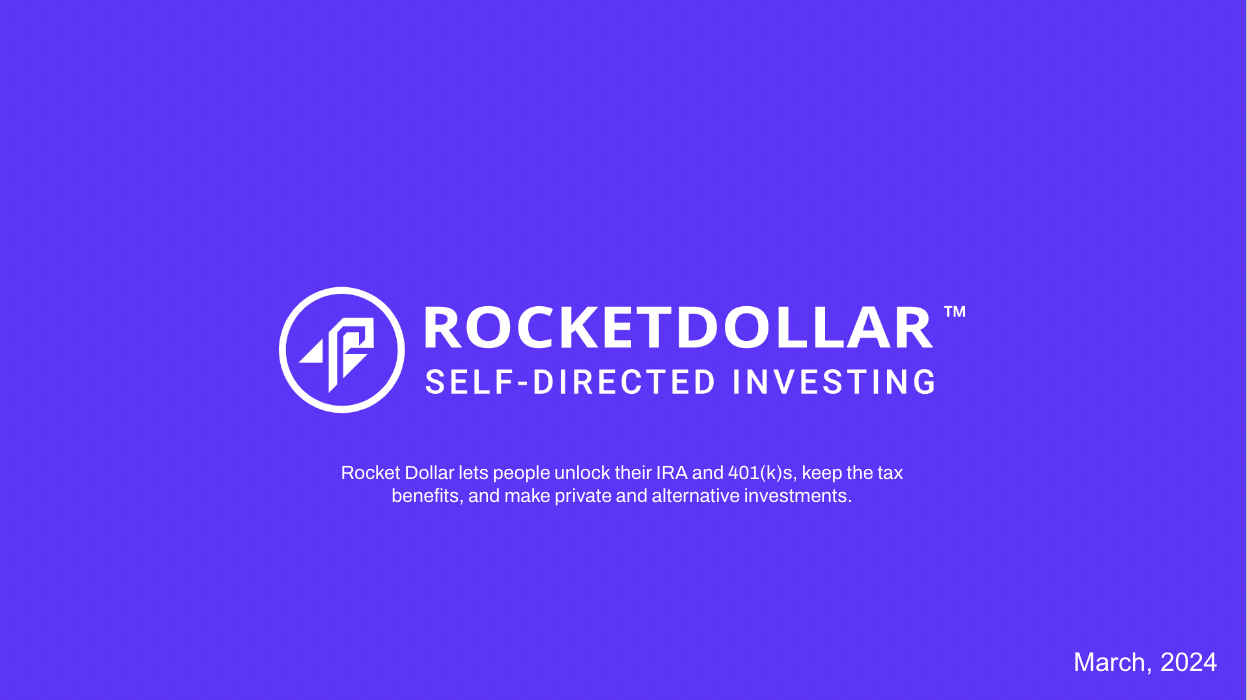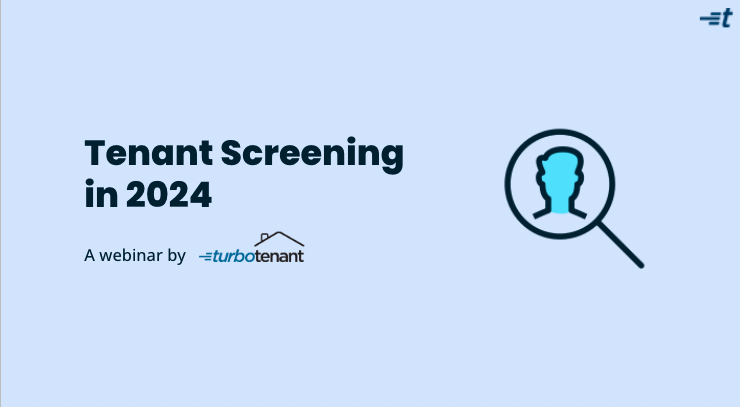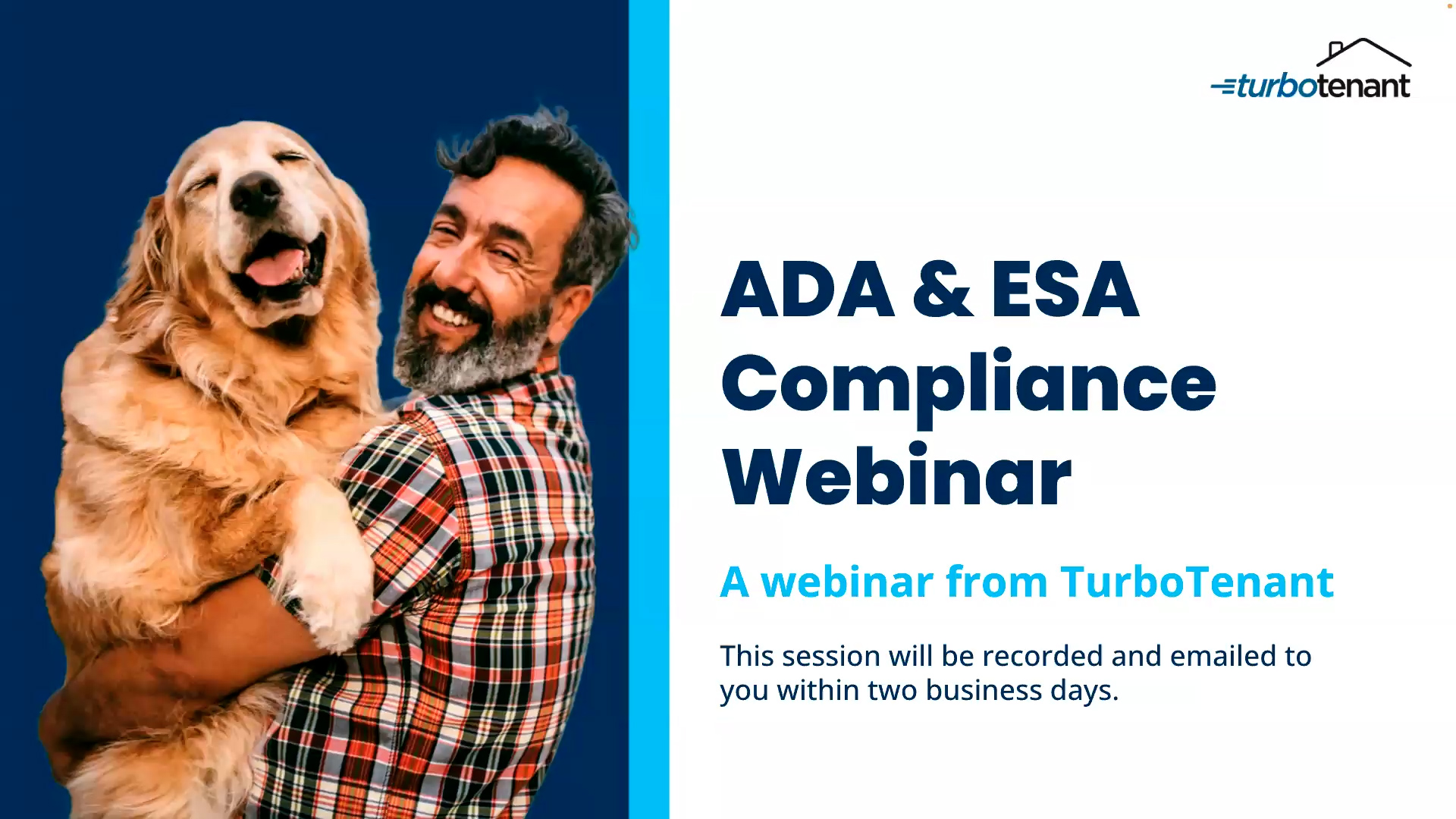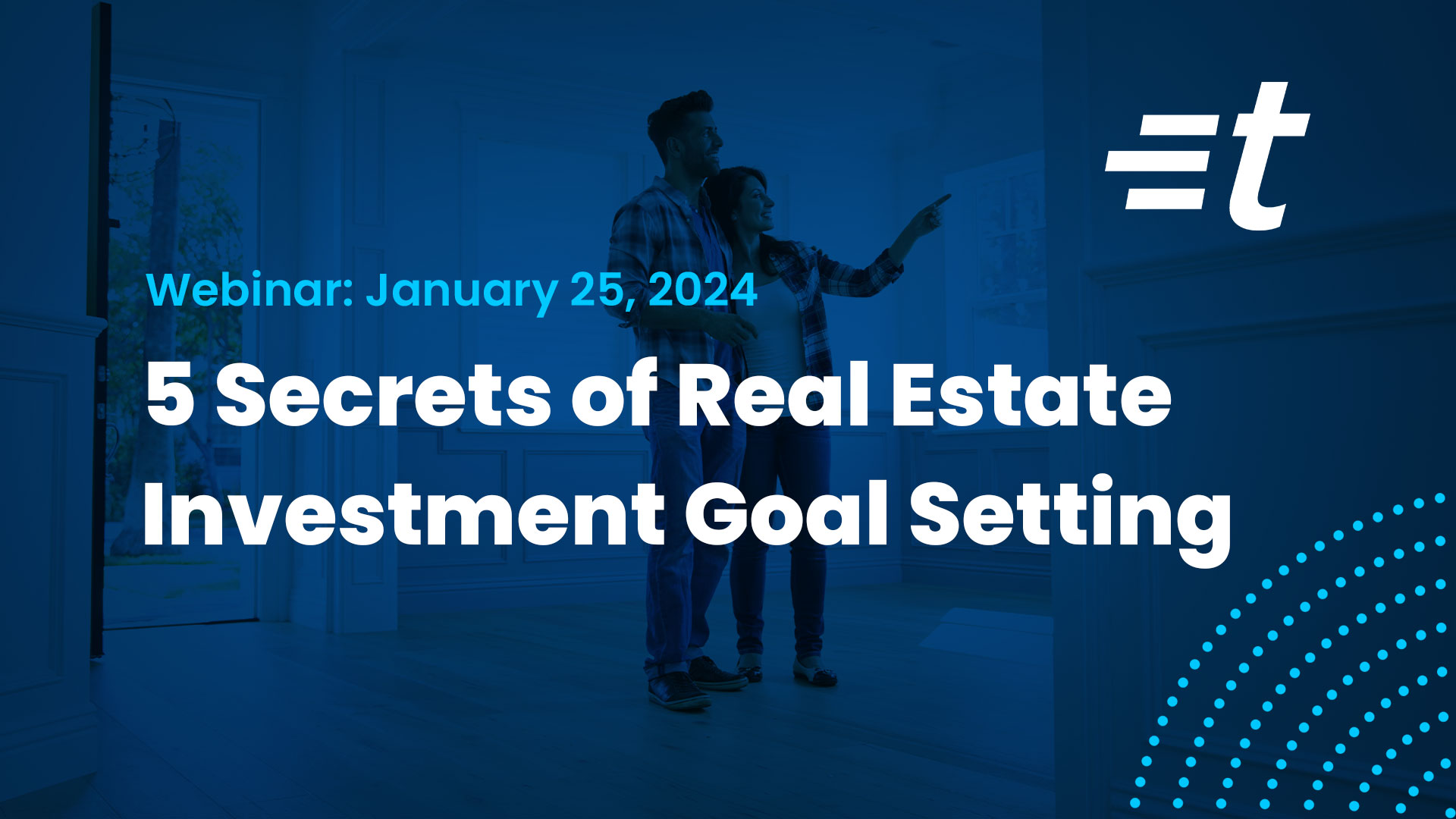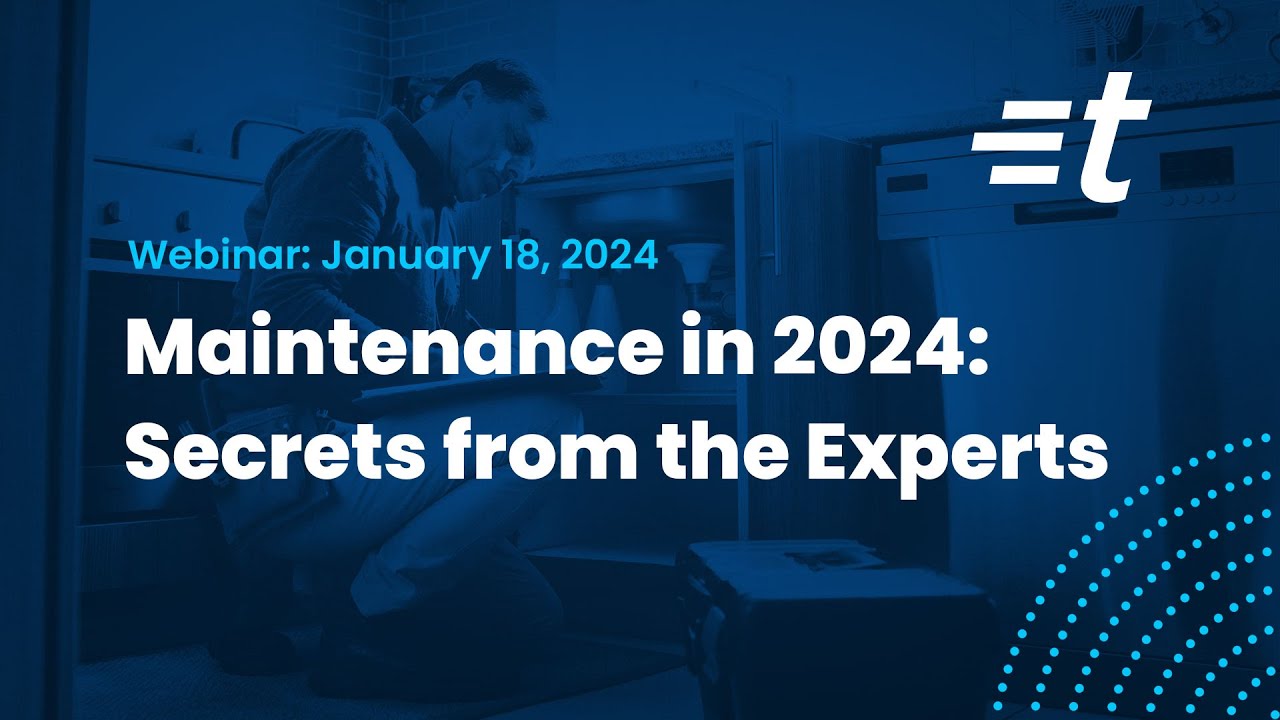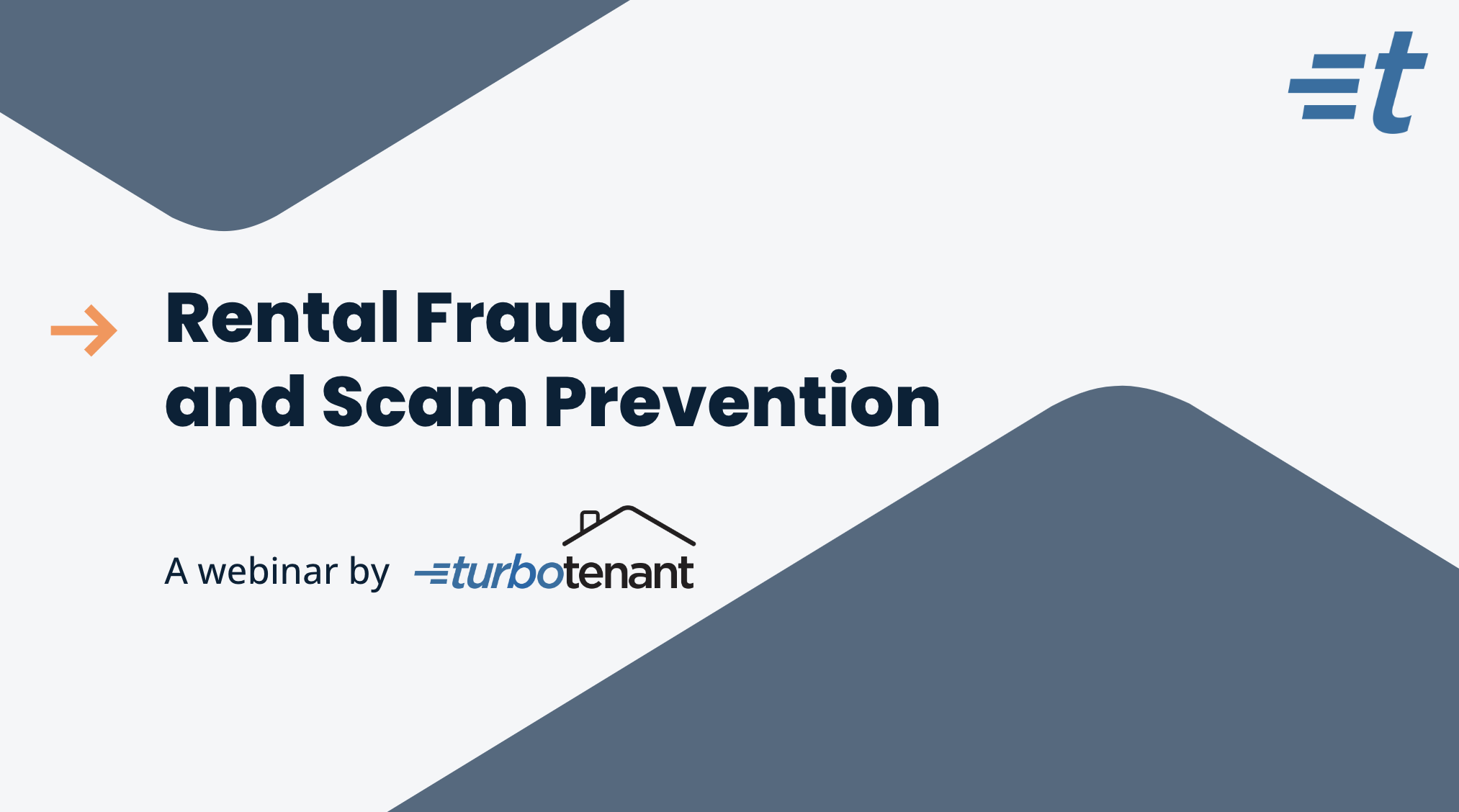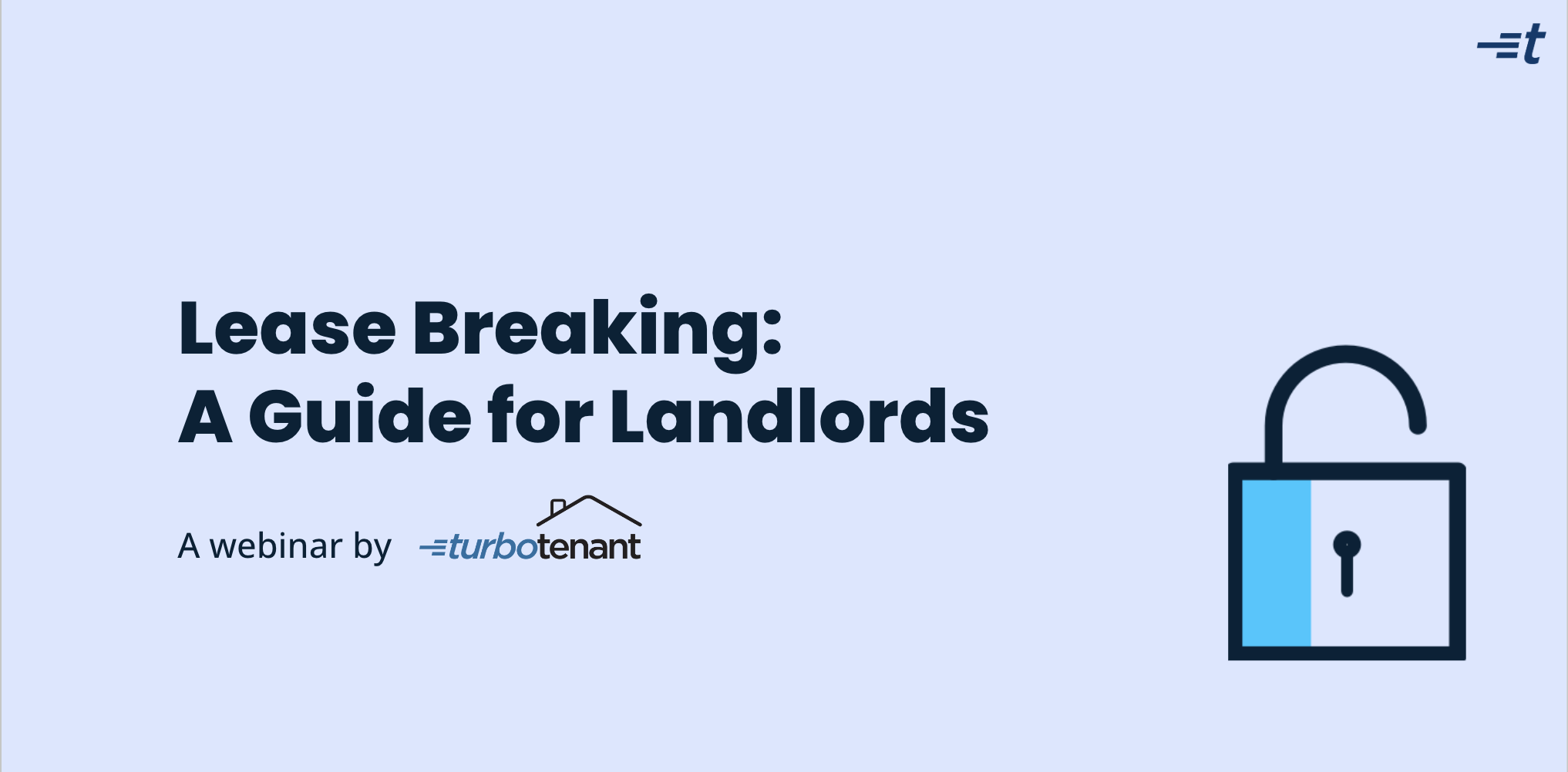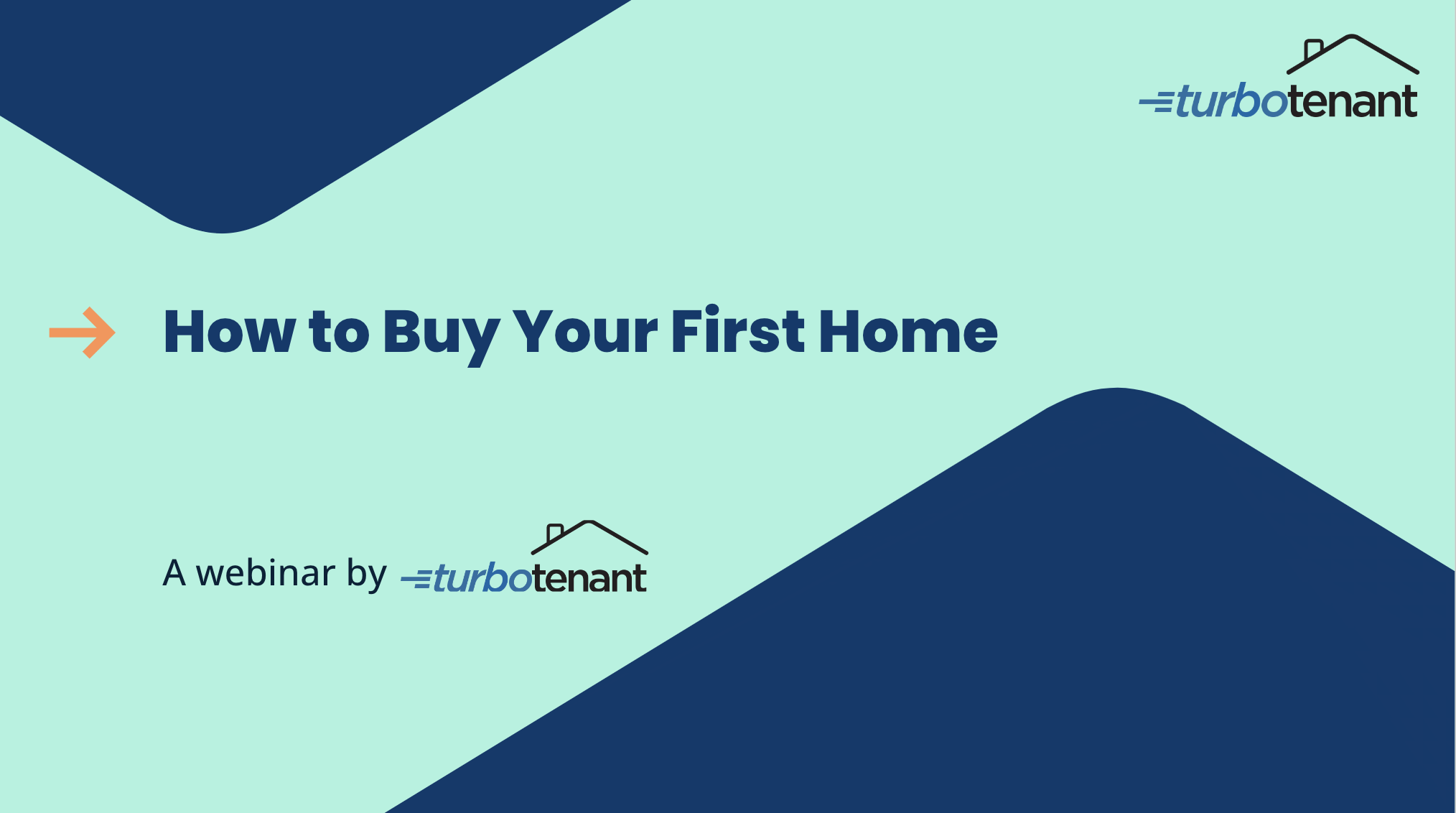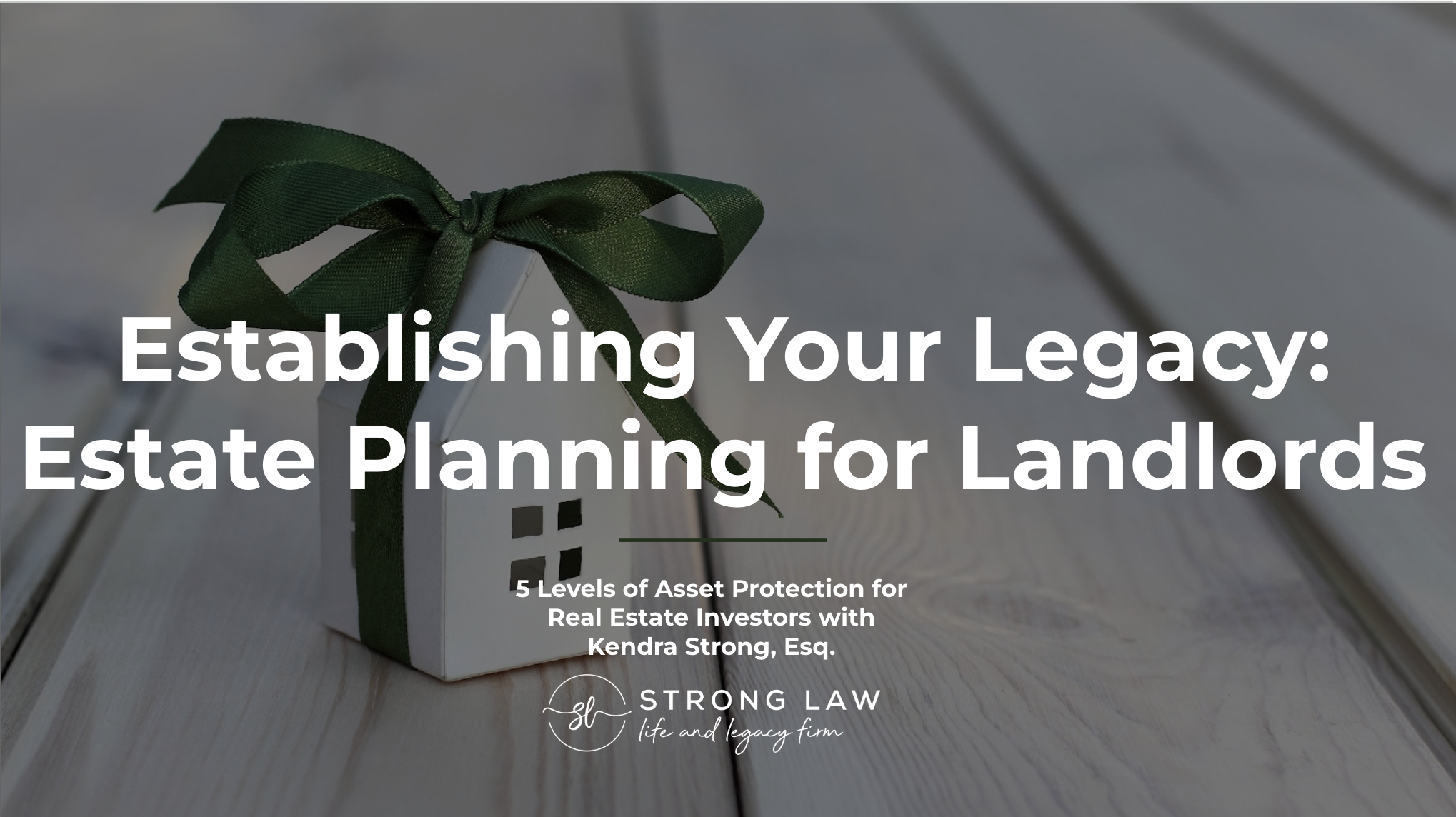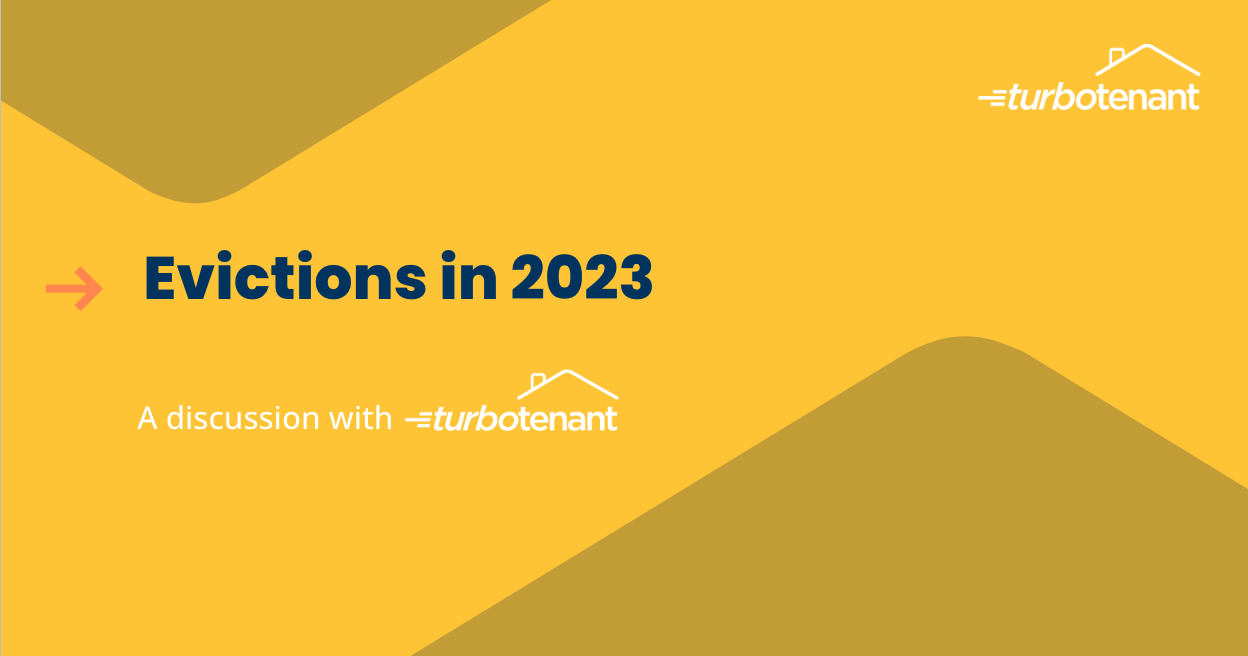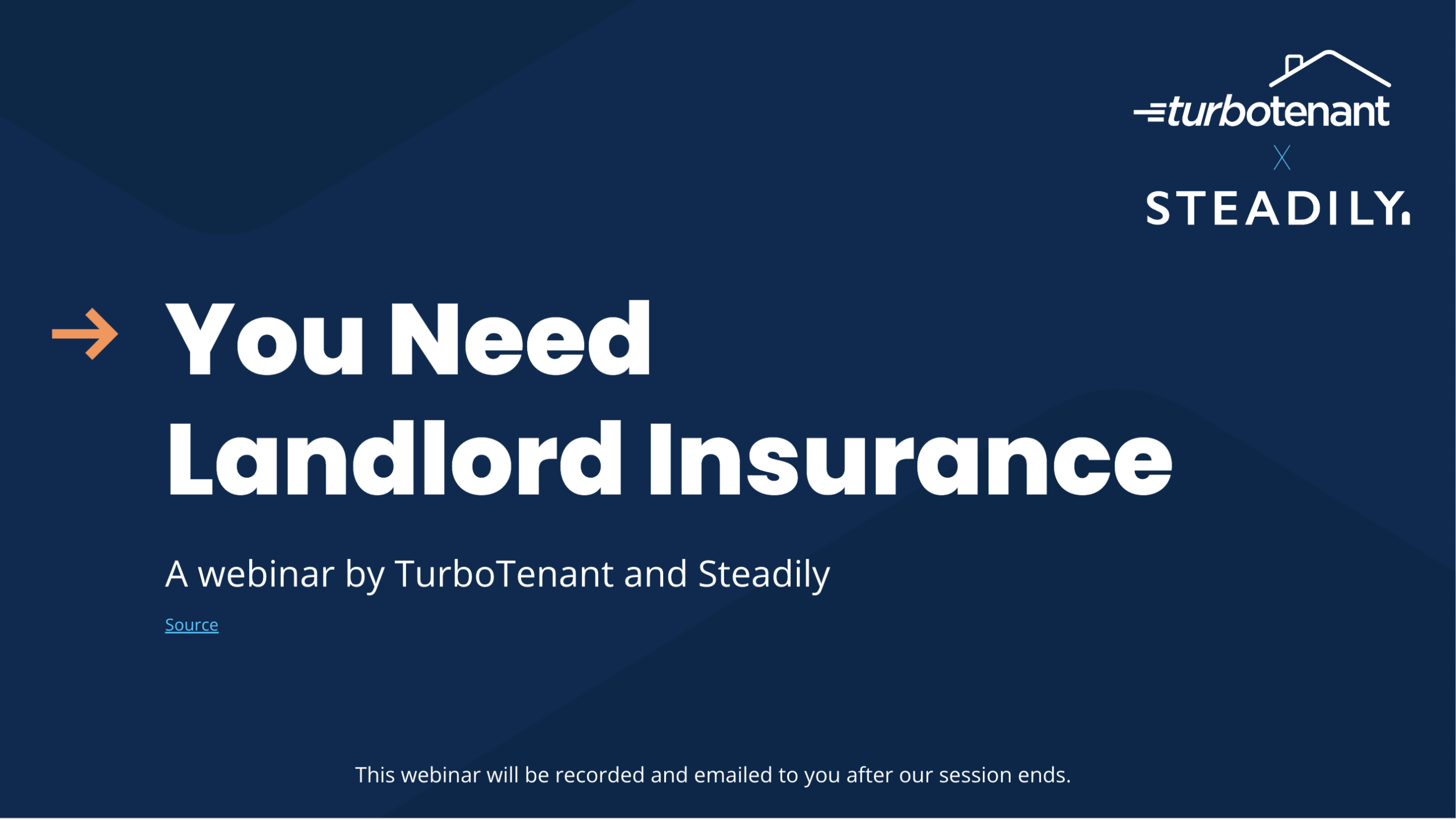Hard Money Loans Webinar
Welcome to our webinar on exploring private lending and financing options with Hunter Latta from Kiavi. In this session, we’ll dive into the fundamentals of hard money loans, various financing strategies, and the unique offerings of Kiavi to support real estate investors.
Key Takeaways
Transcript ▼
Krista Reuther:
Okay, so I appreciate you guys filling this out. It looks like this is a wonderful opportunity to introduce you to the Kiavi team and Hunter. Many of you have TurboTenant accounts, which is great, and a good split of people who have attended a webinar with us in the past versus not. Thank you so much for spending some time with us today. We are thrilled to talk to you. So to kick things off, as we mentioned, we have the incredible Hunter Latta here with us from Kiavi Hunter. Would you like to introduce yourself to the audience?
Hunter Latta:
Yeah, thanks Krista. So I’ve been here with Kiavi for about a year and a half now. My background is solely in private lending worked for a few different lenders in the past, but been doing this for about six years now, six, seven years, and has again solely been in kind of the private lending space, so hard money loans or private money loans. So looking forward to helping educate some of the folks that have not heard about Kiavi and help educate folks that are not as familiar with hard money loans and kind of how those work and the different types of options that are out there. We can just go ahead and jump right in next slide.
Thanks. So we’re just going to dive in and kind of talk high level about what types of hard money loans are out there. And then we’ll dive into kind of Kiavi, different exit strategies, etc. So next slide please. And I believe we have one more poll for you here. Krista, thank you.
Krista Reuther:
Absolutely we do. So we are curious how you currently fund your real estate investment portfolio. Please feel free to select all that apply. So you are not limited to one choice. If you have an other option we would love to see you share that in the chat. Okay.
Hunter Latta:
I’m going to jot down some notes as we’re kind of some of the concentrations here so I can kind of touch back on some of these throughout the conversation that we’re going to have today. Looks like a lot of folks have done traditional mortgages which is good. Looks like some folks have done some bridge loans.
Krista Reuther:
Also got some DSCR and the A loans in the chat along with private money.
Hunter Latta:
Let’s call the bridge loans kind of private money or or hard money loans in the past if you haven’t selected one or haven’t selected that bridge loan and have done private money loans or hard money loans go ahead and and select that option.
Krista Reuther:
Alright folks. Yeah, we’re on the same wavelength. Yeah. Okay. Okay. And let’s so let’s show these results here. So as you can see, lots of traditional mortgages nothing wrong with that, but I’m so excited for you to learn from Hunter today about other options that you’re disposable. Cool.
Hunter Latta:
Okay, so I’m going to dive on in so you have a whole lot of different options and financing real estate deals which I’m sure a lot of you are familiar with so you can of course self fund them, ie all cash. You can use hard money or private money lenders out there hard money being kind of like the, kind of like the key obvious of the world, the lenders that are a little bit more institutional than kind of rich, your rich uncle or rich aunt that maybe is kind of more private money that you know they stroke you check they don’t have a lot of guidelines they just know that you’ve been investing in real estate and are willing to cut you a check type type private money lenders. Then you’ve got traditional banks, which is kind of your conventional financing routes that are Fannie Freddie, or just bank bank loans in general.
Then you’ve got self directed IRAs and then for those of you that are potentially have sold some real estate and are 1031 exchanging into your next investment property you have 1031 exchange vehicle as well. So those are the typical traditional different routes that people take, and we’re going to dive on in into some of these so next slide please. So for key avi specifically you want to know like what are your requirements so I’m going to read through these kind of bullet by bullet and then the rest of the slide I’m kind of going to just be general and high level I’m not going to go bullet by bullet and kind of just touch on the main point so feel free to toss questions in the q amp a feel free to the webinar chat.
I’m going to pause strategically here and answer some of the questions and some of them we’re going to save for kind of the q amp a here so this will take about a half an hour for the, for the presentation portion will leave about a half an hour for q amp a. Key avi requirements are we are business purpose lender and what that means is that we lend to investors, we do not lend to folks that want to buy a property for the purpose of living in themselves so that would be an owner occupant loan kind of a traditional agency backed loans sometimes bank rate loans or our owner occupant loans so business purpose loans is going to be the first and foremost bullet here and then we only lend to entities we do not lend to individuals so we lend to sole proprietors ships LLCs corporations different different types of entities. Then we have minimum FICO score of 660. There are some some down payment and cash reserve requirements which we’ll get into in a little bit. And then we have different we service different types of business plans or exit strategies here so we have buy and hold investors that we work with fix and flip investors that we work with. And then sometimes short term rental investors that we work with as well as among other different types of strategies that are out there but those are some of the primary ones the primary different exit strategies.
Then jump into the next slide please. And then so a few different options of when you can use a hard money loan. So you could use a hard money loan for say a rental property, both for long term and short term rentals, as well as a fixed and flip loan and then for commercial multifamily properties for Kiavi at least. You could certainly use a hard money loan for other asset types or other business plans, but these are the kind of the primary ones that we really focus on. And so rental loans you could or for rental properties, you could use a bridge loan to take down that property in a short term or a short closing runway there. So you need to close a loan in less than 30 days. A traditional rental DSCR product might take you a little bit longer to close that. Bridge loan might be a great execution for you. And then you can say you need to do some rehab to it.
Do that work that needs to be done and then put a new tenant in place and then prepare yourself for a long term rental loan, which would be kind of our DSCR products, which will kind of break those down a little bit in later slides here. You’ve got your fixed and flipped. So that’s pretty straightforward. That’s buying your distressed asset, rehabbing the property and then putting it back on the market. It’s a great execution for a hard money loan. And then you’ve got, as I mentioned, the multifamily property.
So the same kind of concept is you buy a distressed asset, you need to rehab it, you need to put more tenants back into place and then ultimately get yourself ready for a long term loan with maybe an agency lender, a local bank, etc. So I’m going to stop here. Do we have any, let’s check out the chat. Any questions we can, we can cover here. Chris, did you see
Krista Reuther:
Anything that, yeah, go ahead and shoot them off. Perfect. So Theresa is curious why you would look at FICO if it’s a loan to a business entity. And if there are partners on the deal, do you use FICO for all of them?
Hunter Latta:
So we look at FICO, while we’re still into an entity, there are still people controlling that entity behind the scenes. We’re going to look at the FICO of the guarantor of the loan, not all of the different partners in the entity. Some lenders look at all of the partners or have a requirement if they own a certain percentage or more that they are going to pull FICO on all of the borrowers.
But we look at just the guarantor. And there’s a strong correlation between FICO history and delinquency rates when you get in kind of, if you zoom out at like a super high level and look at across all of the industries, all of the mortgages ever originated. There’s a strong correlation between high FICOs and low delinquency rates and lower FICOs and higher delinquency rates. There’s a lot of other factors that go into it. We have a ton of data behind the scenes that we look at that we have access to over doing 50,000 some odd loans in our history. But that’s kind of at a high level why we look at FICO of the guarantor in a business purpose loan.
Krista Reuther:
Well said. On that FICO train, Lisa is curious, for FICO scores, are you using a person’s individual or the company’s EIN number?
Hunter Latta:
Using the person’s social security number to pull FICO. Fantastic.
Krista Reuther:
And Jen is saying or asking, the highest FICO tier is just 740 plus, correct?
Hunter Latta:
Ours is 750 plus, I believe, on the bridge loans. But it’s different for different product types. For bridge loans, you might have different buckets of different hurdles for the FICO and for long-term DSCR products. You could go all the way up to say 780 or 800. Usually it’s every 20 points on FICO for us at least is a different pricing bucket on say a rental product. But that’s kind of getting a little granular. I would say that’s kind of a conversation you want to have on a one-off basis with your loan officer. That makes sense.
Krista Reuther:
Okay. And Cordell requests that we define acceptable cash reserves. Does it have to be money in a checking or savings account or do you consider investment accounts 401Ks, etc. as well?
Hunter Latta:
So typically it’s cash for us at least. In some instances, we can make exceptions for if it’s liquid assets, so investment accounts 401Ks. There are some instances where we can account for that as well. But we can dive into that a little bit further kind of in the Q &A. We can unpack that a little bit more. Perfect.
Krista Reuther:
Okay. And just like he said, we will be coming back to these questions. So I’m making notes. Please continue to keep them coming. But I think that is about what we have right now for this slide. Yep.
Hunter Latta:
Let’s keep moving. I think we actually moved backwards. There we go. Let’s go one more slide forward. Thank you so much. So hard money, pros and cons here, what we’re going to cover. But the pros first, you’ve got quick closings, you’ve got easier applications, easier underwrites typically as well. And then you’ve got flexible terms, i.e., maybe a 24-month bridge loan or on a rental product, you might be able to kind of play with the levers a little bit, shorten your prepay, increase your leverage, do buy downs, etc. There’s a lot of different flexible terms that we can offer that help you kind of achieve your business plan.
We’re going to talk about business plan, the different exit strategies here a little bit more in depth in a minute. Then on, say, our bridge loans, we offer interest-only payments and then on our debt service coverage ratio or DSCR products and our 30-year products. We also offer some interest-only. So that kind of is a mess underneath that flexible terms bucket there. But to touch a little bit more on fast closing and easy applications versus, say, like a bank, for example, bank underwrites are going to be a lot more excruciating with the amount of diligence they’re going to ask for. They’re going to do a full underwrite of your tax returns, your bank statements, your personal financials.
They’re going to kind of go in and dig in real deep and have a lot of questions that process takes a long time. So if you need to close quickly, say you’ve got a 30-day escrow or 15-day escrow, a hard money lender is going to be your better route because they’re going to be able to close faster. They’re going to have easier applications. Keyavi, for example, we don’t dig into tax returns, bank statements, personal financial statements for our bridge loans. So it’s largely focused on an asset-based loan and focusing on the project itself. And that’s what we’re looking at when we’re underwriting a bridge loan.
Next slide, please. So some of the cons, right? Like hard money, like we still require some form of down payment. So that’s anywhere from 10 to 35%, depending on the type of project that you’re doing. And that is kind of touching on the cash requirements question that came up a little bit earlier. So you’re going to need to have at least that much money in cash reserves in your bank account, because you’re going to need that for the closing, right? And then we’re going to require that you have some liquidity to cover the payments during the duration of the loan, right?
So we won’t get into all the nuts and bolts there, but that cash reserves requirement is important because you’re going to have some down payment, you’re going to have some debt service that you’re going to need to service, and you’re going to have potentially rehab that is revolving in and out of that bridge loan. Sometimes, or typically hard money is going to be higher interest rates than say your bank rate financing with a large population of people on that first or that second question that said they’ve done traditional financing. Agency backed financing, traditional financing is going to be the lowest rate that the market has to offer for long-term financing, but that’s kind of the trade-off, right? Like if you go through that excruciating underwrite and you can get all the way through to the finish line, you get a pretty good rate, but it takes a long time to get there. So sometimes, for some folks, the higher interest rate is worth it to them to be able to kind of more efficiently move through the loan process and focus more on buying additional real estate and stabilizing additional real estate, maybe that’d be for fixed and flip or for long-term rental. And then for hard money, sometimes they have prepayment penalties in there.
So on our DSCR products, for example, we have prepayment penalties that are structured in here, and then on our bridge loans, we don’t, to be clear, that we do not have prepayment penalties on our bridge loans, but those are at a high level some of the cons here. I’ve covered a lot of information there. I see a bunch of questions popping up in the chat. Krista, do we have any that we feel like we want to cover here? Do we want to kind of move some of these to the Q &A section?
Krista Reuther:
Yeah, great question. So I’m going to let the questions about Kiavi specifically wait until the end because we’re going to cover quite a bit of that. But I do see Erica is asking how is the down payment percentage determined? Is it based on the funded amount, credit score, etc.?
Hunter Latta:
We do have some requirements in there for if you have a lower FICO that we cap at a certain percentage of the purchase price, but down payment, we go up to say 90% of the purchase price, so the 10% down payment there. And we can go all the way down to say 65 or 70% of purchase price to kind of control the different levers there on down payment. That’s going to impact the higher the LTC or the financing on the purchase, the higher your rate is going to be because the overall LTC of the project is going to be higher. There’s what’s called risk adjusted pricing that we do. So if the higher LTC is a little bit more risky, so a little bit have higher rate. If you have more skin in the game, common term that you’ll hear in the lending space, i.e. more money in the deal, then you’ll get a better interest rate. Nice.
Krista Reuther:
Okay. And JW is asking what is the standard prepayment penalty and is it negotiable?
Hunter Latta:
So we’ll get JW, we’ll dig into that a little bit further kind of when we get into some of the comparisons between the different product types. Like I mentioned, we have a few different DSCR products, but it’s typically a step down for Kiavi and we’ll impact that a little bit further in the later slides. Wonderful.
Krista Reuther:
Okay, let me do one last sweep here. Let me know if we’re going to cover this as well, but David is asking if the seller can provide the second note in credit buyer for CC.
Hunter Latta:
For closing costs, got it. I’m assuming that CC means closing costs. So we do allow for seller seconds on the bridge loans, but there’s some requirements there. So I would recommend talking to your loan officer. That’s kind of a specific scenario. Like I said, we have some requirements around that. So it is allowable, but we definitely need to explore that a little bit further on a one-off basis to make sure that we’re doing this right for you.
Krista Reuther:
Well said. Okay. And then a lot of this we’re going to cover or we will circle back to it when we talk about Kiavi specifically. So I think we’re safe to move on. Cool. Thank you.
Hunter Latta:
Okay, so different financing strategies. So we’re going to talk about a handful of different exit strategies. And I think we have one more slide or question coming up. Is that correct?
Krista Reuther:
Indeed, you are correct. So please select all the strategies you’re currently using as a real estate investor. And if you’re not yet an investor, we have included an option for you. Please don’t feel embarrassed about selecting it. Knowledge is power.
And that’s what we’re here to do. So please select everything that you are currently using. Okay.
What does single asset rental mean? Great question. Same question from Jen. That is fantastic. I know we’re going to touch on it in a second, but Hunter, if you want to explain.
Hunter Latta:
Yeah, single asset rental is I guess would nest underneath that long-term rental. So if you’re investing in single asset rental, you’re effectively doing long-term rental. And we’ll kind of unpack what that product means to Kiavi here in some of these upcoming slides here. We’re going to talk about different exit strategies and then a comparison of different product types that Kiavi offers.
As well as kind of a little bit more about Kiavi at a high level. Wonderful. All right. Looks like we’ve got a lot of answers on this one.
Good engagement. About 80% of us are long-term rental operators. 20% are short-term rental.
Got some borrower folks in here and then fix and flips. And then we’ve got a few folks that are new to the game and that’s okay too. That’s what we’re here for is kind of learn as much as we can and jump on in. So let’s go ahead and jump into the next slide then and let’s start unpacking this. So I’m going to get this poll off my screen so you can see the slides. Here we go.
Okay. So first exit strategy here is long-term rental. So when you’re investing, obviously you want to think about if I’m buying this property, what is my long-term strategy with this property? Is it to hold as a rental? Is it to hold or to fix and flip? Is it the borr method?
It needs some rehab. I want to put a tenant in place and then take some money out, repeat the process. Or it could just be you’re buying a straight up occupied property that has a tenant in place and I want to hold this property.
Like the numbers, it looks good. Like let’s buy this long-term rental. So the first strategy here for long-term rentals is a great way to produce positive passive cash flow, especially if you’re using a third-party property manager or have an in-house person that manages kind of the day-to-day of the management.
Maybe you own your own management company. It’s a great way to produce positive passive cash flow. We have multiple loan programs available to help service the long-term rental. One of the options on the previous question was single asset rentals. We have a single asset rental product and what that really means is one loan to one property. So as you are maybe stabilizing a property and it’s ready for long-term financing, then you could apply for say a single asset rental loan.
It’s a 30-year product. Typically we have some ARM products as well that are classified under that single asset rental product. But so you have single asset rental products and then you have, we also offer a portfolio loan product which is five or more properties wrapped up into a single loan which is then closed as a single loan versus potentially five single asset rental loans or multiple single asset rental loans. And then long-term rental products are largely driven, FICO, or rates are driven by FICO and leverage. So those are your two biggest levers typically when you’re when you’re talking about interest rate.
There’s some other smaller things that play into it typically, but but those are your two big ones. So if you’re rate sensitive and you have a strong FICO and you want to bring that rate down to something a little bit more palatable to you, then and you’re at say 75% leverage for. For your current request, maybe dial it back to 70 that that’ll help you out on the interest rate. That’ll bring it down a little bit. Same goes for you know if you’re on at 60% you want to take a little bit more leverage out you don’t care about the rate as much, you know you want to get your cash out so that you can buy more real estate and produce more cash flow.
Then maybe take a little bit of a higher higher LTV. All of all of these long term rental products are going to be kind of pass fail tested by a what’s called debt service coverage ratio. DSCR for short, for those of you that aren’t as familiar with it.
So it is the debt service coverage ratio is calculated by net operating income divided by annual debt payment and our products have different requirements so the single asset product is is a 1.10 debt service coverage ratio requirement and our portfolio products are 1.20 debt service coverage or greater. So let’s go ahead and jump into the next slide we’re going to save kind of that the Q &A here, and towards the end of the sectional pause and we’ll have a, we’ll answer some of these questions so your next strategy here is short term rental. Really great, really popular investment strategy. It typically generates more income than a traditional 12 month lease, you know you’re charging per night you’re having tenants that are staying, you know maybe one to two nights, then you’re, you’re turning that that property over and getting somebody else into that property. Very important with this with this exit strategy or business plan to understand the market conditions and the demand drivers and what I mean by that is, what are your, what are your draws for short term rental like are you near a beach, are you near a ski resort, are you near, you know, Disneyland or Disney World, for example, those are going to be strong demand drivers for your short short term rental. And then you need to think about to the market conditions, if, if that demand driver starts to drop and there’s not as much demand for short term rental. What are your market conditions as potentially a long term rental does this pencil out does this, does this deal make sense still if I have to put a 12 month tenant in place to, to kind of offset the short term or the decreased demand for short term rental.
Next slide please. And so we’ve got different, different strategies here so you could use a portfolio loan versus single asset loans and one of the differences from portfolio to single asset is that portfolio we can offer what’s called non recourse on the single asset loans they’re all full recourse or personally guaranteed. For most of the folks in the room that have done traditional finance methods you’ve probably signed for a personal guarantee or full recourse through those through those Fannie Freddie or bank type loans that are kind of fall underneath that traditional financing method. One payment versus multiple payments say no back to the example I gave earlier if you have five properties and are doing a portfolio loan. You’re going to have one payment one closer one under right versus having, you know, five payments five different potential servicer or at least servicing account numbers to keep track of, and then five different closings right so think about signing all those different lines.
Five different times like you’re going to have your hands going to have carpal tunnel once you’re done, once you’re done signing all those different closing docs. There’s a little bit of an economy is a scale with with portfolio as well so a little bit cheaper on the fees typically a little bit more efficient to to close the loan. It’s a little bit better interest rates there’s there’s some economies of scale there, but you know the trade off is for some folks, you know you you might not. You might not acquire five properties fast enough for it to make sense for you so a single asset product might be great, because maybe you do a couple of years you do want you know ones each Tuesdays a year or, you know, or maybe you do just barely five in a year.
So, with where rates and are today and how fast they’ve been moving. It might make more sense to just do that single asset long, but if you’re acquiring at a high capacity or high scale portfolio is a great execution for you. Let’s go ahead and jump into the next slide so here’s the burr method you could do this at scale or you could do this on a on an individual property basis which is, you know the by renovate refinance repeat method here so. Very common amongst amongst real estate investors, a fun key call out here is that the burr method, the cash proceeds from the refinance as some of you are probably familiar with is tax free right like that’s why everybody loves burr like you force the appreciation into the asset, you take your cash out and you roll it into your next investment and that that cash out is is tax free. So, again, you go into this, this method with that exit in mind right like you, you back into the numbers on the purchase using if I think it’s worth this at the at the end of the business plan, and I put wide dollars into it, I can only purchase this property for X amount to make this make sense. And then another thing to keep in mind when you’re, when you’re doing a burr loan is that you know your your exit strategy is a debt service coverage loan typically. So you need to run your numbers does this does this loan make sense.
If I think the value is is say 175 thousand once it’s complete, and you rent it out for the market rents at today’s interest rates. You know, am I meeting my lender DSCR requirements, based on based on my numbers on the front end so then you know you have a certainty of execution on the long term take out. So you want to kind of back yourself into where you need to be on the purchase based on where you want to go. Let’s go ahead and jump into the next slide.
Perfect. And then for the kind of the final business plan here, fix and flip and bridge loans at a high level here. Kind of the goal here is to pay as little upfront as possible in the form of points, fees, cash in, et cetera, typically for a lot of borrowers, especially newer borrowers.
And a bridge loan or hard money loan is going to be great for that. You want to prioritize your costs sometimes more than leverage, then that you have that option as well. And then you want to pay attention to prepayment penalties. Sometimes some lenders have a minimum hold period or minimum interest period on their bridge loans.
So that’s something to keep in mind. And then you want to be realistic about your time to exit your loan term and understanding what are your lender’s extension costs. So if you think that maybe it’s going to take you eight to nine months to do the project and you’re looking at a 12 month term, it might make more sense to take the 18 month term right out of the gate. If their extension costs are are a little costly to get there might make more more dollars and cents mathematically to take that 18 month term and give yourself a little bit more run life.
You want to think about all those things when you’re when you’re looking at a at a fix and flip or a bridge loan. So let’s go next slide. And I’m going to pause there. We’ll do a couple questions. I’ve seen a lot of a lot of things popping into the chat. So let’s go ahead and Chris, do you want to hit me with a couple of these and then we can impact some of us?
Krista Reuther:
Absolutely. So first off, how do you qualify for a portfolio loan?
Hunter Latta:
The portfolio loan is going to be five or more properties, minimum loan amount of 500,000 and a minimum property valuation requirement of 50,000 or greater. Those are kind of the the key three requirements. They’re all multiples of five that get you kind of started on a portfolio loan. Fantastic.
Krista Reuther:
To that end, can multiple single asset loans be rolled up into a portfolio loan?
Hunter Latta:
No, short answer is no. If they’ve already been originated, they’re kind of already set. They’ve got their prepayment penalties. If you’re outside, say they’re older single asset loans that you’ve closed years ago, you could certainly refinance those into a portfolio loan, kind of consolidate your debt. That’s very common with lenders to or with investors to kind of consolidate debt with traditional financing. I haven’t touched on this point yet, but with traditional financing, you typically cap out at 10 ish properties as a max is all based on your debt to income ratio.
But Fannie Freddie guidelines cap you, I believe it’s at 10 off the top of my head. And so what we can do is refinance those properties that are on traditional financing. I call it clearing the deck, kind of refinance those traditional, traditional financing properties into either our single asset product or a portfolio loan, for example, and you can go out and rent and repeat again. So it kind of, yes, you would in today’s environment, you probably be increasing your cost of capital, your interest rates across those properties would increase. But that would also open the door for you to go out and acquire more properties at the cheapest rates in today’s market. So your weighted average cost of capital will move up, but you’re able to go out and acquire more properties. So it’s a bit of a trade off, but something that we do regularly for, for investors. Wonderful.
Krista Reuther:
For a portfolio loan, can I have five of the five of them under different LLCs, or will they all have to be under one LLC?
Hunter Latta:
So they would all be underneath one LLC. And without diving too much into kind of org structures or entity structures, they would need to be under one LLC. I’m happy to see that Anne asked that question, happy to find some time and to kind of dive into that a little bit further on a one on one call. Wonderful.
Krista Reuther:
All right. Another portfolio question, just to clarify. David is curious, the portfolio loan must be five or more and be under contract for the one, for all, the one for all loan product, sorry.
Yes, I think he’s saying, I’m not answering the question, but I’m going to rephrase it so Hunter can answer it. So the portfolio loan must be five or more and be under contract for the one, for all loan product.
Hunter Latta:
I think what he’s asking, if there’s a, maybe there’s a purchase question in there that’s kind of hidden in there. I’m not quite sure what, like what he’s getting at. They are underneath one application, one loan underneath a portfolio loan and one underwrite, etc. So that’s kind of the, that’s kind of the point of a portfolio loan is to kind of simplify the underwriting process. But if there’s an acquisition in there, which we can do on the portfolio loan side, there’s definitely some more stuff to be talked about there. Maybe we can, Dave, we can connect after the call here. Lovely.
Krista Reuther:
Portfolio loans are very popular. So Ivan is asking if the five, that magic number five for portfolio loans has to be five properties or five doors?
Hunter Latta:
So it’s going to be five properties for us. Some lenders are five or more doors. So say for us, it’s five or more properties of five or more single families. The easiest example for some lenders, it might be they had triplex and a duplex qualify, but we’re kind of the former there, the five or more properties.
Krista Reuther:
Delightful. We do have a question on BERS. So can a BERS loan involve small amounts for cosmetic improvements as long as the appreciation will still be realized? For example, $10,000 to $15,000 in improvements, or is it typically for a larger amount of improvements? Teresa wants to know.
Hunter Latta:
So the BERS method can be for cosmetic to make the answer short, but without going too far into kind of BERS, it also comes down to the buy side too. If you’re buying from a distressed seller and it’s under market purchase price because they needed to sell it for whatever reason, and you have cash, you’re able to buy it today and clear up all their issues. Yeah, it might only need 10 to 15k in improvements, but you’re realizing that appreciation because that person had a problem that you’re solving. Real estate is all about solving problems and sometimes solving other people’s problems by kind of quickly closing is a great way to pick up a BERS property at a really good price. We see it all the time as on the lender side. You kind of go, I can’t believe this is real, but it happens all the time.
Krista Reuther:
Very nice. Okay, I know we have a lot of questions. We are going to get those answered for you as best we can. One last one for now about properties. So what is, let’s see, what if the properties are set in individual trusts and you are looking to establish a portfolio loan? Ivan asks.
Hunter Latta:
So kind of back to the LLC question earlier, so that would be, we’d still need them in one LLC at closing, Ivan. So they would ideally be transferred at closing by the title company and they’ll take care of that for you, but they do need to go into one LLC. So I’m happy to find some time and kind of unpack that a little bit further. There’s a lot behind that, but happy to find some time. Lovely.
Krista Reuther:
I still have plenty of questions, but we can use them in the Q &A and further on. Cool.
Hunter Latta:
So next up, we want to kind of cover some of the questions to ask your lender for those of you that that maybe haven’t worked with a hard money lender before and have done mostly traditional. These are going to be super helpful for you.
So let’s just go ahead and dive on in. So the first question if you’re doing a rental loan is like what are your DSCR requirements. And again to kind of talk about that service coverage that that measures the assets ability to pay its expenses and the mortgage payment. So the greater the debt service coverage ratio, the better.
All lenders have minimum debt service coverage requirements. If they’re doing rental loans, it’s just asking the question is what is your DSCR requirements and how do you calculate your net operating income. That’s another kind of dovetail off of this a bit and say like, that’s another important question to ask. It’s not in the slides here, but how do you calculate net operating income. And understanding that will be helpful so that you can calculate your numbers on on new deals that you’re looking at purchasing and and helping you understand like, are my properties that I own today potentially a fit for for their long term rental product.
Let’s go ahead and dive in next slide. How does your adjustable rate mortgages differ from a traditional 30 year fixed rate mortgage so if you are looking at arm products adjustable rate mortgage products. How do they adjust when do they adjust what is the index that it’s tied to. What are the, what’s the max amount that it can adjust to when it adjusts what’s the maximum that the rate can go to over time these are all things that you want to think about when you’re, when you’re and my rents grow by x% per year over the first five years the loan like what is my what is my debt service coverage going to look like then. You know, am I going to be able to cover my my expenses and my debt service like am I happy with those returns and in say five years if that rate adjusts and then look at you know if I do a 30 year fixed rate mortgage. And what are those numbers look like over time if my again my my rent continues to increase my payments going to be the same over 30 years because you’re not going to have an adjustable rate. Now, those are all things to consider when you’re talking to a lender about their different, their different rental products.
Let’s go ahead and jump in the next slide please. What is your rate log process, some lenders offer a forward rate lock at at the submission of the loan and some letters don’t so you need to understand like what what is your process if you offered it all and and understand that process at key obvi we offer on the single asset loans a 45 day rate lock and portfolio because typically it’s more properties kind of takes a little bit longer we offer a little bit of a longer rate lock of 60 days for the portfolio loans. But it’s important to ask that that question if they offer a rate lock or not some lenders might not offer it and during underwriting your rate is subject to market changes.
Usually it’s a it’s quoted as an index say the 10 year Treasury plus spread or five year whatever their index is plus some kind of a spread. And when you get to closing you might find out that well I thought I was getting a, you know, x% rate it’s now why and why is a lot higher than what I was expecting. And then that changes your your returns on that property. By, by having that floating interest rate during the underwriting process.
So it’s good next slide please. Then what are your escrow requirements. Some lenders require three months of principal and interest taxes and insurance to be escrowed at closing some lenders have capital expenditures escrows that are required at key obvi. These are not a requirement right like we’re not just impounding additional principal interest taxes and insurance into like, typically that gets escrowed as a, as a payment reserve on closing statements but we don’t require that.
Next slide please. How do I qualify for your loan and like what are what are the impacts of the terms so kind of back to the adjustable rate comment I made earlier in the 30 year option as well. Evaluating the different term lengths that the lender offers. How do I qualify for the loan so understanding that what, what are their FICO requirements what are their appraisal requirements or their value requirements what are their underwriting process look like what are the underwriting requirements. Like I mentioned earlier some lenders typically banks require a full underwrite with the taxes the insurance and the PNL’s the bank statements, like it can be a lot more arduous to get through that to get through that underwriting process with some lenders than others so it’s important to understand those, those different, those different requirements and qualifications.
Next slide. And then some of the common pitfalls right like debt service coverage ratio is is is a big one folks that haven’t maybe stress tested their deals at when they’re purchasing them for kind of a higher interest rate environment, like we’re in today where rates are increasing you want to look at where where is my debt service coverage at today’s prevailing rate and then maybe where is it at say, like half a percent higher, maybe a full point higher I mean the markets have moved so much this year. It’s really important to look at, if it’s going to take me say six months to stabilize this property to get it ready for a long term, a long term rental product debt service coverage ratio loan, like what are those what those numbers look like in six months if the rates move, half a point or full point. So that’s a that’s an important, that’s an important one, and then different amortization schedules so sometimes banks are going to have a shorter amortization schedule some lenders in general just have shorter amortization schedule so your payment on a 20 year amortization while their rate might look really great on paper but when you calculate your payment, it might be higher than say a 30 year amortization schedule at a little bit of a higher rate.
So that that’s another thing to keep in mind. And then what are their pre payment penalties. So if you know they have a longer pre payment penalty or pre payment penalty that’s a little bit more painful to get out of some of them are, you know, like ours is pretty straightforward it’s a step down pre pay you know and in year one that your pre payment penalty is x percent your two is, you know, goes down a little bit, your three goes down a little bit. And then some lenders have what’s called yield maintenance if you’ve done portfolio loans that’s a common or defeasance if you’ve done commercial loans in the past. Those are really painful to get out of.
In fact, it’s, it’s typically so costly that, you know, it’s disadvantageous to somebody to actually get out of that loan before that that penalty and And then number four, what is your valuation process look like? What AMC do you work with? Do you use an AMC? Do you do desktop appraisals? Those are some of the different pain points that borrowers experience with values. What are your requirements for condition of the properties? Appraisers have a condition rating system called C1 through C6. Usually lenders have a requirement of C4 or better, which is kind of C4s. Your typical average rental property usually lands at C4.
C3 is kind of a C3 and C2 are kind of higher in fix and flips or a year to two year old. You construction and C1s usually like brand new property. So those are important to understand what are your valuation requirements and what are your valuation process look like. And then all that to be said, these common pitfalls, it’s important to have a lender that can help you navigate those, help you prepare for those, help you educate yourself on all of these different pitfalls and how to stay out of them. So that’s really important too. So I think next slide, we’re going to talk a little bit, kind of dive in deeper on Kiavi and who we are, what do we do, the different loan products that we offer that I haven’t really touched on yet. And we’re just going to get a little bit more granular here.
So who is Kiavi? Okay, so we financed over $4.1 billion in bridge loans in our history, we financed over 50,000 projects. We just passed that mile marker recently in the last week or so, week or two. So that’s a great nice big round number when you think about that that’s a lot of, a lot of loans, a lot of closings, a lot of data that we’ve accumulated over time and different projects and things like that that we’ve seen. So we’ve got a huge database in the background that we’ve learned so much from that we use to our advantage on learning from that and applying that to make the process better for investors as time goes on. We’ve learned in 32 states plus Washington DC, and we’re known for on our bridge loans especially the quick closings right so our average closing timeline, probably about 14 business days give or take. But that that closing timeline is largely controlled by investors and how quickly you provide us the documentation we need, how clean is the documentation, how long is it, like, how well is it presented to us. And, and we’ll get into states that we lend in here in a second I see those questions popping up here. But, but yeah we have really quick closing timelines and then a fifth bullet that I’ll kind of dovetail off of here and add on is that we have a really great tech platform that you can go in you can self serve kind of plug in the numbers and figure out like what is my rate going to be for this project and and then choose from there submit the loan kind of print off, print off pre call letters that you’ll typically need when you’re putting in, when you’re putting in purchase offers and yeah the tech that you have access to is really really powerful. Let’s go ahead and jump into the next slide so we’ve got a lot of questions about the market so that we cover so all of the markets here in green, or that that teal color actually is is are the markets that we cover so we do lend in New Jersey. And then the gray markets are unfortunately we’re not in those states yet but, but we are actively working on expanding to new markets and and those are on the roadmap. A little bit further on down the line.
Let’s go ahead and jump into the next slide. So, kind of diving in a little bit more into that that closing process I mentioned earlier so, like I said you can go online you can submit the deals. You can price them out. You can say like if my, you know, if my rehab is x, and I think the value is why and I’m purchasing for for x dollar amount, like, you can plug all of those numbers in and get a pre call letter submit that with your offer to make your offer stronger. You can track and manage your loans in flight can see where, you know if there’s any conditions that the underwriter needs you can go in and upload documents in there. You can do everything that you’re going to need to do to be able to operate on a on an efficient in an efficient way as an investor. Without having to say pick up the phone talk to your loan officer send stuff over email wait for that pre call letter. You can go in and do it all on the system which is is really really powerful when you’re talking about real estate which moves in seconds and minutes and is very quick and you need to get those those offers out to win a deal.
Yeah, Austin, Colorado is good so that one pop up. Then you have a dedicated account manager to right so we have. We have a whole team that’s dedicated to helping you make sure that you’re successful shepherding the deals through the process the underwriting process, all the way through closing.
And that that dedicated team is going to be there to help you make sure that you’re successful kind of your point of contact if you ever have any questions if you ever have any issues like they’re going to help you navigate that. Let’s go ahead and click into the next slide. And this is, you know how to get started right so like how do we work with key obvious a couple of those those questions are earlier on.
So there’ll be a few ways. So if you go to key avi comms forward slash turbo tenant. That’ll take you to a nice landing page. And then turbo tenants actually going to put the webinar on their website underneath the webinar section of the website.
And then you’ll have access to the slide deck. And then you, like I mentioned a couple times you can go in and into the our website plug in the project numbers submitted deal and that’ll get you assigned to a wrap and, and, you know, then it’s kind of off to the races from there. But there’s there’s several ways to get in touch with us. And we’re more than happy to get on a call answer any questions you have, etc.
and make sure that you are are fully understanding of the process and fully understanding of how we can help you with whatever your project maybe. Let’s go. Next slide which is the live Q &A I don’t know. I don’t have a can’t see a timer on my desktop here okay so we’ve got about, what is about 35 minutes for for Q &A so we’ve got, I saw a bunch of questions popping up in here let’s just kind of start going through some of them. So, you want to just kind of start, start firing away.
Krista Reuther:
Yeah, absolutely we have about five minutes so we might do rapid fire round. First off, Janice is curious do hard money loans get reported to credit agencies. If not, how do you build your business credit to get cheaper options for buy and hold over time.
Hunter Latta:
So we do not report to credit agencies. Some private money lenders do I guess that that’s a great question. And a good question asked all lenders that you work with right traditional financing is going to report to your credit right and credit is not just not just a function of how many mortgages do you have there’s a whole lot of things that go into it, but getting some of those traditional mortgages off your credit and off your balance sheet into say an LLC into a private money loan will certainly help you out. Wonderful.
Krista Reuther:
Wonderful. To that end, David wants to know how many loans can you have at once.
Hunter Latta:
So, on our rental loans, we do not have a limit. On the bridge loans, we have, we do have limits to start, right? Like we don’t give you an unlimited source of funds, but you are pre-approved when you get approved for what we call our membership program.
We get you, we get you approved, you can start borrowing from us. I think that cap is off the top of my head, it’s three million bucks right out of the gate. So it’s a lot of, a lot of dollars that you have just to, for that basic approval. Then if you need more, say you’re, say you’re buying a ton of properties, you’re aggregating rentals, you’re buying 10, 20 days a month, you know, you’re that caliber of an investor. We can talk about how to increase that, that amount, that, that exposure limit to a higher number. Wonderful.
Krista Reuther:
Quickly, I’ll take this one. Will this recording be available? Yes, we will send it to you within 48 hours. So keep an eye on your email. You don’t have to do anything else. Marguerite wants to know how long has Kiavi been in business and from whom do you receive cash for short-term loans? Also, what’s the average duration of your loans? Sure.
Hunter Latta:
So we’ve been in business since 2014. We receive our cash from what’s called securitizations. So we have bridge revolving securitizations that we’ve, that we have established. And as we close loans or, you know, give you guys money to go out and acquire properties and rehab them, we’re able to part them on these securitizations. And as loans pay off, that opens up availability for us to part more, you know, new loans back into that securitization. So it’s called a revolving securitization. And then our average duration, I think is about six months off the top of my head, roughly for the bridge loans.
Krista Reuther:
That’s awesome. Okay. How effective is working with Kiavi for cash-only auctions? Cash-only is effective.
Hunter Latta:
So it just depends, right? Like if you’re buying cash and then you come back to us and you say, hey, I bought this, you know, last week, all cash, I want to refinance it onto a bridge loan, take some cash out to, or take some additional cash for rehab. That’s something we can help with.
It’s, you know, like I said, it all depends, right? Like if you bought something all cash three months ago and you want to put it on a rental loan, we do have some seasoning requirements on the rental loan side for cash out. So that kind of gets into like, what’s your LTC of the property?
What’s the stabilized value? What is the amount of cash that you’re going to be taking out? There’s some, you know, that’s going to fall in the bucket of talk to your loan officer. That’s a pretty specific scenario. But cash purchases is certainly something we work with on a pretty regular basis. Nice.
Krista Reuther:
Similarly, does Kiavi offer a construction loan product if the land is owned? Roger notes that he has multiple lots that are contiguous. Wow, I can’t speak that are contiguous. Wow. Contiguous. Thank you.
Hunter Latta:
We do offer construction loan products that can fit to my bucket. That’s one of the products that I work on daily. We do have some experience requirements around that, as well as experience requirements around the multi-family loans. I know I kind of touched on those early on, but there are some some experience requirements. Happy to, again, find some time and chat through that a little bit more so we can move through some of the other Q &As. But we do offer construction loans.
Krista Reuther:
Lovely. OK, and let’s see here. Kurt says, Hunter, love the content. Thank you. How has the macro environment of inflation and higher rates changed your pricing in terms relative to 12 months ago? And what are your underwriters most concerned about?
Hunter Latta:
It’s a great question. The markets have been nothing short of volatile and kind of crazy. 12 months ago was a night and day different world that we lived in. Rates are up today. Rates are higher than where we were 12 months ago. And underwriters probably are most concerned, especially on rental products with with what are the current cashless day?
Do the do these numbers make sense? And then focusing all lenders right now are really heavily focusing on the quality of an appraisal, so making sure that you are not getting something that’s higher than market market value like an appraiser that overshoots the bow. So a lot of lenders are focusing on on on values right now, too. So you might see some lenders are lending a little bit more conservatively today.
Krista Reuther:
Well said. All right. Dishon asks, how long does an LLC need to exist to receive a hard money loan?
Hunter Latta:
So that’s a that’s a complex answer. But if you are forming, say you say you are striking up a new business, right? You have some partners and you’re looking to acquire real estate. It doesn’t need to be. It doesn’t need to exist for any amount of time. If you are adding partners to the to the entity, that’s a little bit of a different story. Again, kind of falls into the that that example falls into talk.
Let’s talk further. But to answer your question in short, no, we don’t have a requirement for that. The new one is being formed. It doesn’t need to be existing for X number of months or anything like that.
Krista Reuther:
Delightful. OK, I’m going to be cognizant of the time. Thank you so much for the questions. I’m going to take one more and then tell you what to do to get the rest answered. So Deborah is curious. When a prequel letter is considered insufficient, how do you get a TBD approval?
Hunter Latta:
So the kind of the clear to close doesn’t come until it’s truly clear to close. That’s a little bit later in the process. But typically what we found is that that prequel letter is sufficient, right? Most folks view that as like, OK, they’ve got a proof of funds, and they’ve got a prequalification letter.
I mean, we run into it, but not as often, right? And that falls into that once you get the approval for the membership, kind of that you’re an approved borrower with us, we can get you a proof of funds letter that states that you have available funds of X dollar amount, whatever you’re approved for. So that kind of is the second thing that can help you out there, Deborah, when you’re negotiating on purchases.
Krista Reuther:
Fantastic. Well, Hunter, it has been so lovely to learn from you today. Thank you for being here and for sharing all of your knowledge. Guys, if there are any questions that you have left, please reach out to Kiavi. They are the experts. They can help you out in a one-on-one setting.
And they’re just wonderful at what they do. Thanks so much, everybody. Thank you. Have a good day. We will send this over to you within two business days.
Top questions asked by the audience:
Why do you consider FICO scores if the loan is to a business entity? Do you check FICO scores for all partners in the deal?
We check the FICO score of the guarantor of the loan, not all partners. There’s a strong correlation between FICO history and delinquency rates, which helps us assess risk.
Do you use a person’s individual FICO score or the company’s EIN number for credit checks?
We use the person’s social security number to pull the FICO score.
Is the highest FICO tier 740 plus?
For bridge loans, the highest tier is 750 plus. It varies for different product types and usually, every 20 points on the FICO score can affect pricing.
What counts as acceptable cash reserves? Do investment accounts or 401Ks count?
Typically, cash reserves are in the form of cash. In some instances, we can consider liquid assets like investment accounts or 401Ks.
How is the down payment percentage determined? Is it based on the funded amount, credit score, etc.?
The down payment can be between 10% to 35%, depending on factors like FICO scores. The higher the Loan-to-Cost (LTC), the higher the rate due to risk-adjusted pricing.
What is the standard prepayment penalty and is it negotiable?
We typically use a step-down prepayment penalty. Specific details can vary, so it’s best to discuss with your loan officer.
Can the seller provide a second note for closing costs?
We allow for seller seconds on bridge loans with certain requirements. Discuss with your loan officer for specific scenarios.
Do hard money loans get reported to credit agencies? How can you build business credit to get cheaper options over time?
We do not report to credit agencies. Some private money lenders do. Traditional financing, which reports to credit agencies, can help build business credit.
How many loans can you have at once?
For rental loans, there’s no limit. For bridge loans, there is an initial cap (e.g., $3 million), which can be increased based on borrowing needs and history.
How long has Kiavi been in business, and where do you get cash for short-term loans? What’s the average duration of your loans
Kiavi has been in business since 2014. We receive cash through revolving securitizations. The average duration for bridge loans is about six months.
How long does an LLC need to exist to receive a hard money loan?
There’s no requirement for how long an LLC needs to exist. New LLCs can receive loans without a specific duration requirement.
When a prequalification letter is considered insufficient, how do you get a TBD approval?
Typically, a prequalification letter is sufficient. For additional assurance, we provide a proof of funds letter stating your approved borrowing amount.
Can multiple single asset loans be rolled up into a portfolio loan?
No, single asset loans cannot be rolled into a portfolio loan after origination. However, older loans can be refinanced into a portfolio loan.
For a portfolio loan, can the properties be under different LLCs, or do they all need to be under one LLC?
The properties need to be under one LLC.
For portfolio loans, does it need to be five properties or five doors?
It needs to be five properties.
Can a BRRRR loan involve small amounts for cosmetic improvements, like $10,000 to $15,000?
Yes, a BRRRR loan can involve small amounts for cosmetic improvements, especially if you’re buying from a distressed seller at an under-market price.
Does Kiavi offer a construction loan product if the land is owned
Yes, we offer construction loan products, but there are experience requirements.
How has the macro environment of inflation and higher rates changed your pricing and terms compared to 12 months ago? What are your underwriters most concerned about?
Rates are higher than 12 months ago. Underwriters focus on the current cash flow and quality of appraisals, ensuring properties are not overvalued.
How do you qualify for a portfolio loan?
Portfolio loans require five or more properties, a minimum loan amount of $500,000, and a minimum property valuation of $50,000 or greater.
For a portfolio loan, can the properties be under different LLCs?
No, they need to be under one LLC.


